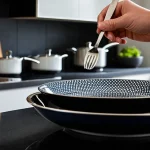Essential Considerations for Crafting a Restaurant Wine List
Insightful factors to optimize your wine offerings
When developing a wine list selection for a UK restaurant, it is crucial to align your wine choices with the cuisine and food menu. This ensures that the wines complement the flavors of the dishes, enhancing the overall dining experience. Chefs and sommeliers often collaborate closely to create pairings that reflect both seasonal ingredients and signature recipes.
In the same genre : What innovative concepts are shaping UK kitchen bars today?
Understanding your customer demographics and preferences is another cornerstone of an effective UK restaurant wine list. For instance, younger patrons may favor lighter, fruitier wines, while traditional customers might prefer classic reds or well-aged vintages. Conducting surveys or analyzing sales data can guide which wines to prioritize or introduce.
Balancing variety is essential when selecting wines. A thoughtfully curated wine list essentials include a mix of local UK wines—celebrated for their unique terroir—and international selections spanning renowned wine regions like Bordeaux or the Barossa Valley. This balance offers customers both familiar options and adventurous choices. Equally important is stocking an appropriate range of red, white, rosé, and sparkling wines to cover different palates and occasions.
In the same genre : How Can UK Kitchen Restaurants Enhance Their Ambiance to Attract Patrons?
By focusing on these elements—menu alignment, customer insight, and variety balance—restaurants can design a UK restaurant wine list that not only satisfies but also excites and retains guests.
Responding to UK Market Trends and Consumer Preferences
Understanding UK wine market trends is essential for businesses aiming to thrive in the competitive wine sector. Currently, popular varietals such as Pinot Noir and Sauvignon Blanc have gained traction, reflecting consumers’ growing preferences for lighter, more expressive wines. Additionally, there is an increasing demand for organic and vegan wines, driven by health-conscious and environmentally aware customers. Recognising these preferences allows restaurants and retailers to tailor their wine selections accordingly.
Consumer wine preferences also show a significant shift toward low-alcohol and alcohol-free options. This trend aligns with broader lifestyle changes that prioritise moderation without sacrificing enjoyment. Offering a diverse range of wines, including these alternatives, can attract a wider customer base and align with evolving tastes.
Seasonality plays a key role in influencing demand. For instance, during warmer months, crisp whites and rosés tend to be more popular, while robust reds and fortified wines see a rise in colder seasons. By adapting wine menus to this seasonal variation, hospitality venues can provide a more appealing and relevant experience for their patrons.
By staying abreast of these UK wine market trends and understanding consumer wine preferences, businesses can optimise their offerings to better meet customer expectations and enhance satisfaction.
Managing Price Range and Value Perception
Balancing restaurant wine pricing is critical to appealing to a wide array of customers. Crafting a wine price structure UK that includes both entry-level and premium options ensures guests of varying budgets find something suitable. A well-designed value wine list doesn’t just focus on cost but aligns perceived worth with price, which influences customer satisfaction and sales.
Establishing an accessible price spectrum means offering wines that cater both to casual diners seeking affordable choices and enthusiasts desiring finer vintages. Strategically placing value-driven wines at lower price points guarantees an inviting selection without compromising overall quality. Meanwhile, incorporating mid-range and high-end bottles enhances the list’s prestige and caters to those looking for exclusivity.
Meeting expectations requires understanding the market and customer preferences. Diners typically expect quality to increase with price, so clarity in the wine price structure UK helps manage these expectations. Transparent pricing and thoughtful descriptions can elevate perceived value, encouraging customers to explore options confidently. This approach balances profitability with customer satisfaction, fostering repeat visits and positive reviews.
Supplier Relationships and Sourcing Reliability
Building strong ties with wine suppliers UK is essential for ensuring consistent quality and timely delivery. Evaluating supplier credibility involves assessing their track record, customer reviews, and ability to meet agreed delivery standards. Reliable wine sourcing depends not only on the punctuality of deliveries but also on the supplier’s adherence to quality specifications and responsiveness to any issues that arise.
When it comes to wine procurement restaurants depend on, exclusivity agreements can shape the uniqueness of their wine list. Such agreements may provide access to rare vintages or limited edition releases, enriching the wine offering. However, they may also limit flexibility in switching suppliers if challenges with delivery or quality occur. Therefore, it’s crucial to weigh exclusivity benefits against potential drawbacks in supply chain adaptability.
Sustainability and ethics are growing priorities in the selection process. Prioritising sustainable and ethical sourcing helps restaurants align with consumer values and supports environmentally responsible practices within the wine industry. This includes ensuring supplier commitment to reduced carbon footprint, fair labor practices, and responsible vineyard management. Ultimately, robust supplier relationships grounded in reliability, exclusivity options, and sustainability create a solid foundation for successful wine procurement.
Navigating Legal and Regulatory Requirements
When managing restaurant wine licensing in the UK, understanding and adhering to the relevant UK alcohol regulations is essential. Businesses serving alcohol must obtain the correct licenses, which include a premises license and a designated premises supervisor authorized to sell alcohol. The law mandates rigorous age verification processes to prevent sales to underage customers, such as requesting valid ID for anyone who appears under 25.
Complying with wine list compliance involves several layers. First, all alcohol labels and menus must accurately reflect the product, facilitating transparency and adherence to labelling rules. Health regulations require that allergens and origins be prominently disclosed. Additionally, imported wines are subject to specific import regulations, including tariffs and certification requirements, to ensure legality and safety.
Staff training plays a crucial role in meeting regulatory mandates. Employees must undergo training in responsible alcohol service, covering topics like spotting intoxicated patrons and refusing service when necessary. This training not only helps maintain compliance but also promotes a safer environment for customers and staff alike.
By carefully observing these aspects of UK alcohol regulations and integrating them into everyday operations, restaurants safeguard their businesses while providing a trusted experience for customers.
Actionable Tips and Checklist for Wine List Success
Maintaining a successful wine list requires continuous attention and strategic adjustments. A wine list checklist is essential for ensuring your offerings remain relevant and appealing. Regularly reviewing and updating your wine list helps to align selections with seasonal trends and the evolving preferences of your clientele. Incorporating sales data allows you to identify popular choices and remove underperforming wines, optimizing your inventory.
Customer feedback is another valuable resource. Listening carefully allows you to tailor your wine list to better satisfy patron tastes and capture new interest. Engaging wine menus that describe flavors and pairings can enhance the dining experience. This approach, combined with well-trained staff who understand the nuances of your wine list, facilitates confident recommendations and effective upselling strategies. Emphasizing restaurant wine best practices like these drives sales and customer satisfaction.
Prioritize staff training to ensure your team can confidently discuss wine characteristics and suggest pairings. This not only elevates service quality but also encourages guests to explore diverse options. Additionally, presenting your wine list in an appealing and clear format makes decision-making easier and more enjoyable for customers. In summary, adhering to a systematic wine list checklist along with these wine list tips ensures a vibrant, customer-focused, and profitable wine program.




